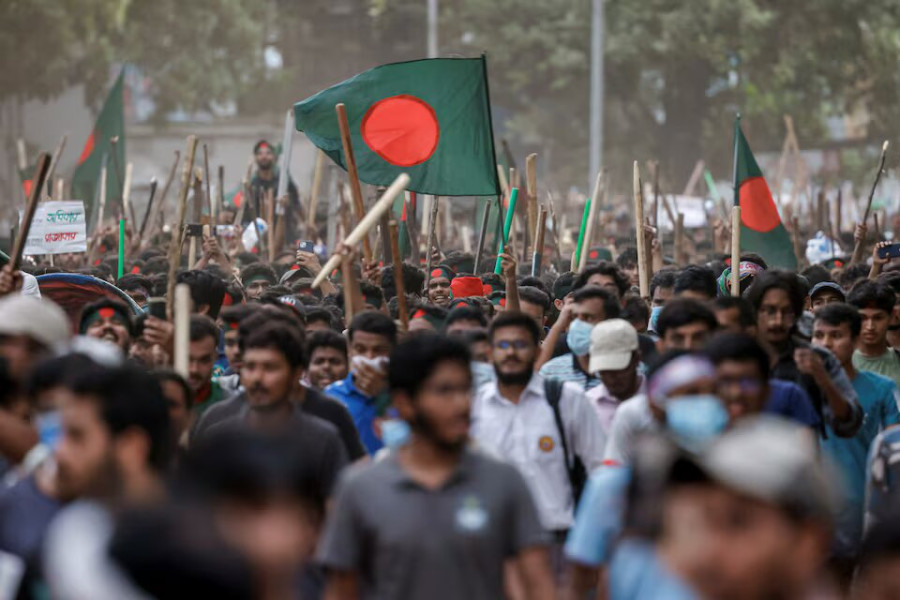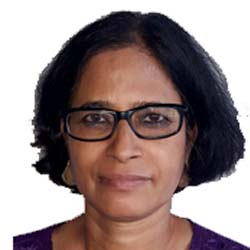Columns
Beyond the quota protest in Bangladesh
Students should not be used as pawns in settling scores with the opposition party.
Smruti S Pattanaik
The demonstration spearheaded by Bangladesh’s students against discrimination in the quota system comes as a major jolt to Sheikh Hasina’s fourth-term government. Clashes with police and Chhatra League—the student front of the ruling Awami League (AL)—and the ruling party, which started on July 15, took an ugly turn by the 19th, resulting in nearly more than 200 deaths and hundreds of injuries.
Curfews were imposed, shoot-at-sight was ordered, and the internet was shut down to contain the protest and violence as right-wing groups and the opposition Bangladesh Nationalist Party (BNP) tried to take advantage of the deep resentment the movement built. The quota reform movement soon took a political turn against Hasina.
The students have been staging protests since the High Court Bench of the Supreme Court’s verdict on July 5 declared the 2018 circular that did away with freedom fighters’ children quota in the class I and II government jobs as void. The students demanded quota reform and wanted the government to legislate rather than issue a circular. Such protests against the freedom fighters’ children quota are not new. Students are aggrieved that 56 percent of government jobs are still reserved, leaving only a few positions for merit-based selection.
Introduction of quota
The Bangladesh government in November 1972 reserved 30 percent of government jobs for those who fought in the 1971 Liberation War, 10 percent for women affected by the war, 40 percent for districts lagging behind and only 20 percent for meritorious candidates. The quota system was amended in 1985 to allow 45 percent of jobs on merit while reserving 55 percent. Since 10 percent set aside for women affected by war remained unclaimed, it was extended to women in general. For the first time, 5 percent of jobs were reserved for the indigenous community, and the district quota was reduced to 10 percent.
In 2010, the government extended a 30 percent quota to the grandchildren of freedom fighters. It stated that the reserved positions would be kept vacant if suitable candidates couldn’t be found under the quota. In 2012, the government reserved an additional 1 percent of jobs for people with disabilities. In effect, this left only 44 percent of jobs for merit.
Students demonstrated against the quota system even in 2013, but in 2015, the High Court bench of the Supreme Court of Bangladesh ruled that the quota for freedom fighters and their offspring cannot be changed. Yet, nothing was done to ensure that. Unfortunately, some applicants close to the ruling regime procured fraudulent muktijoddha certificates, undermining reservation.
In 2018, the Bangladesh Sadharan Chhatra Odhikar Sangrakkhan Parishad demanded quota reform and the filling of vacant positions from the reserved quota with candidates on the merit list. As is the case now, the Bangladesh Chhatra League attacked the students, and around 75 students were injured. The league has been at the forefront of violence on campuses and has been instrumentalised by the party since Hasina assumed power.
However, the violent carnage unleashed this time was never seen before. The students were encouraged by Obaidul Qader, General Secretary of AL, who said the Chhatra League was sufficient to teach the students a lesson, even though the demonstration until then was peaceful. As the quota protest gained momentum, Abu Sayeed, a poor and unarmed student demonstrating against the quota system, was shot on July 16. The private universities joined the movement as it became a pan-Bangladesh student movement.
What triggered the anger this time was Prime Minister Hasina’s statement. In a press conference, Hasina said, “If the grandchildren of freedom fighters don't get quota benefits, will those then go to grandchildren of Rajakars? That's my question, the countrymen's question”. This equating of protesting students with Rajakars fuelled the students’ anger, who only demanded reform for the quota system, not complete abolition. Rajakar is a pejorative term for those who collaborated with the Pakistan Army and opposed Bangladesh’s liberation. Moreover, there was a strong perception that the government sanctioned the high court decision as the institutions were deeply politicised.
A divided country
Since the 1971 liberation war, Bangladesh has been divided over the debate on who are freedom fighters and who are Pakistani regime collaborators. After being elected to power in 2008, Hasina’s government established war crime tribunals to try those who committed war crimes in 1971. Several leaders, especially from the Jamaat-i-Islami and one prominent leader from the BNP, were convicted of war crimes and hanged. The trial concluded, but the Awami League frequently used the term Rajakar or collaborator.
The students, to counter Hasina’s recent label of Rajakar, started using the slogan: Who are you? Who am I? Rajakar, Rajakar! They soon realised the gravity of using this epithet and immediately changed the slogan to “I went to ask for my rights; instead, I became a Rajakar.”
People cutting across the party line supported the students and asked the government to initiate a dialogue. Yet there were no takers as the government remained unmoved. As a way out, the government requested the Supreme Court to advance the date for hearing the government appeal against the High Court verdict. The Supreme Court, in its verdict on July 22, declared 93 percent of jobs to be based on merit and 7 percent would be reserved for various categories. Yet this has not satisfied the students, and they have been urging the government to take action against those involved in the recent killings.
Temporary thaw?
Students have been demanding the release of their leaders and those arrested during the protest, and the deadline for this demand lapsed on July 28. The government is now on an arrest spree, catching the leaders of political parties as well as those involved in violence. It is strengthening its case to accuse the opposition of instigating student violence to topple Hasina’s government. Clearly, Chhatra Shibir, the student front of the deregistered Jamaat Islami Party, was at the forefront of the violence.
The politicisation of the student movement by all the political parties only made the situation murkier. It is also true that the unearthing of several corruption cases against senior government officials amounting to billions has put a question mark on Hasina’s commitment to preventing corruption. This has added to the public’s resentment.
Unfortunately, the use of the Chhatra League, along with the police, to contain student agitation by perpetuating violence has become the norm. The government must seriously address this issue. Second, while the Supreme Court verdict has given a temporary respite, the students demand an empathetic hearing. They should not be the target of Bangladesh’s vengeful politics or used as pawns in settling scores with the opposition party.




 6.73°C Kathmandu
6.73°C Kathmandu















